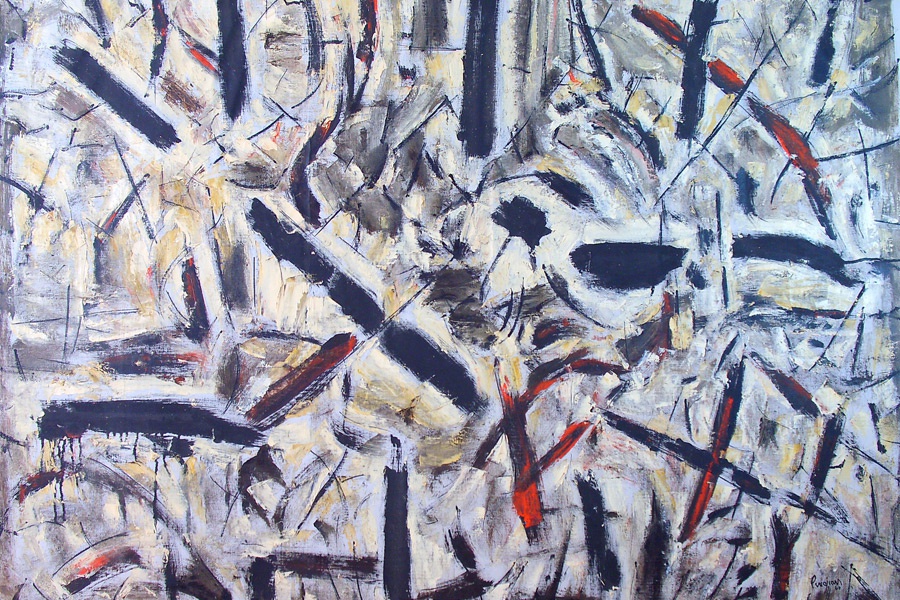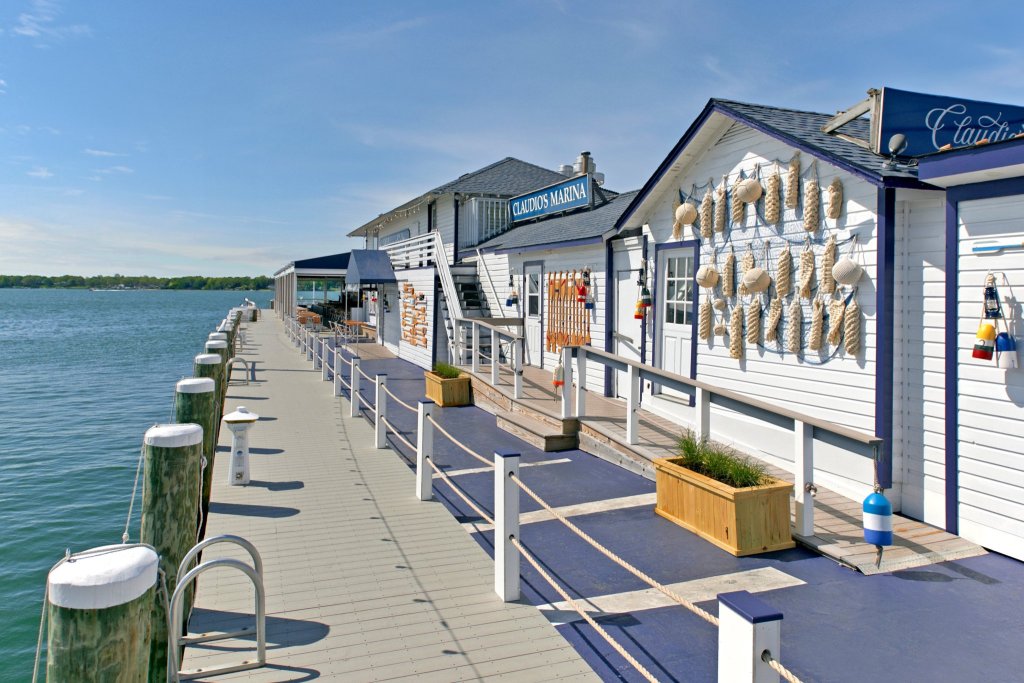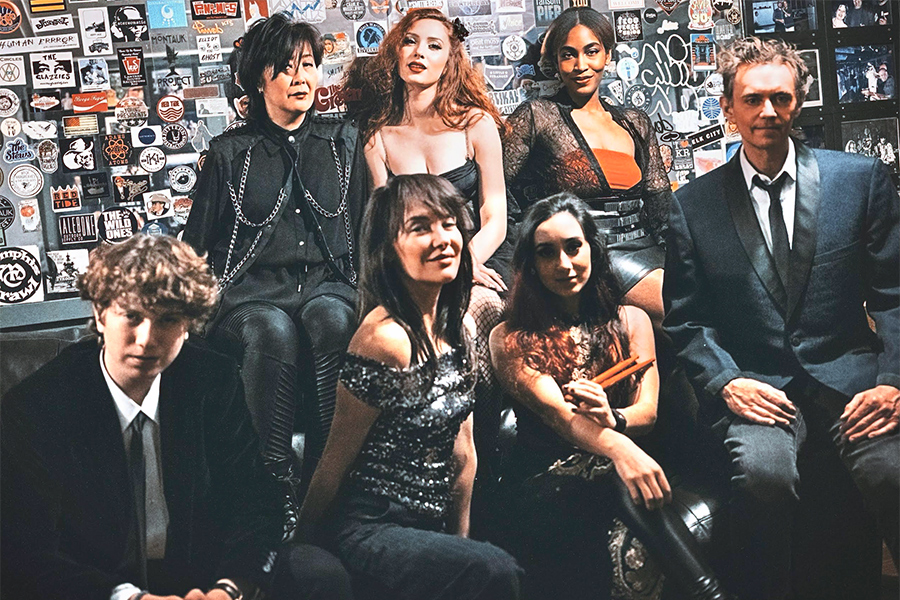Outsider Goes Mainstream: Arthur Pinajian at Gallery 125

From soldier to cartoonist to reclusive artist, Arthur Pinajian’s story is an art world wonder. In this age of mass-media coverage, international art fairs and major acclaim for artists in their 20s, Pinajian’s tale has riveted the public for its under the radar solitary dedication to a life of creativity without recognition. He rarely exhibited, hardly sold and never had any proper write up.
His work was only “discovered” when his sister in Bellport was hauling his work—thousands of paintings, drawings, sketches, and journals—to the garbage dump as per his wishes after his death in 1999.
Luckily his artist cousin Peter Najarian, flew in from the west coast to see what was being discarded and managed to salvage most of it, save for a few beyond-repair canvases. He persuaded her to keep Pinajian’s work in the barn, so he could help figure out what to do with it all.
The sister, Armen, had supported her brother for most of his life after he rejected a career as a commercial illustrator. Pinajian had penned cartoons for Marvel Comics before joining the army in World War II. During the war he sketched constantly, depicting his fellow soldiers and landscapes. When he was released he joined the Art Students League of New York where he spent time at the Cedar Tavern with the 1950s art crowd that included Franz Kline, Willem de Kooning and Jackson Pollock. He moved to Woodstock for 22 years, then to New Jersey and finally to a studio cottage in Bellport.
After being stung by galleries that insisted he make art for “women’s groups” that clamored for “crappy work or innocuous sentimental sketches,” Pinajian tried several different styles, including impressionism, fauvism, cubism, surrealism and abstract expressionism, with mixed degrees of success. He finally decided that no one would see his work until he could “put it on the line.”
The line never came. So Pinajian holed up in Bellport and painted until his death at age 85. A dedicated painter, he followed his muse through to the end, questioned art and technique in his journals, and then decreed that all the work be destroyed. Pinajian’s cousin saved it once, and when Armen passed away and the property was sold, she left the work in the barn.
Thomas Schultz, who purchased the property with Lawrence Joseph, was curious about what he had bought, so he called in a team of experts. They were astonished at the enormity and completeness of what they found. After years of archiving, sorting, cleaning and framing the collection of over 7,000 paintings found stacked two-stories high in the barn, several exhibitions and books were put together.
Art historians and specialists are still amazed that works of such a high caliber remained completely unknown for the better part of a century. Major private collectors have already purchased paintings, and at least six are headed to museums. Art historian Peter Hastings Falk, chief curator of the Pinajian Estate Collection, explains that the work was unseen because the artist was a hermit for his entire life. He never married or had children, though he built up quite a collection of erotic drawings. He wrote in 1969 “My inspiration is greater than ever now that I don’t have to share it with anybody. It is all mine and I shall pursue it with all my power.”
But perhaps someone knew of his story. There is an uncanny resemblance between Pinajian and the hero in Kurt Vonnegut’s Bluebeard: The Autobiography of Rabo Karabekian, a 1987 novel about an eccentric painter. Both Pinajian and Karabekian, a.k.a. Bluebeard, were Armenian-Americans, raised by parents who escaped the 1915 Turkish genocide. Both men served in the U.S. Army during World War II. After the war, both abandoned their careers as illustrators for higher artistic pursuits. They eventually moved to eastern Long Island near the ocean, where they kept their paintings tightly locked away in a garage.
The stories do differ, but it’s intriguing to think that Vonnegut crossed paths with Pinajian somewhere along the line and used his story as a jumping off point for a “hoax autobiography” as he calls it.
Gallery 125 is now home to the collection and Schultz and his partners have spent seven years and more than $250,000 to catalog and archive it.
“I feel really honored to help this legacy be discovered,” says Schultz, standing in the archive. “There is so much important work here, and many different exhibits can be formed out of it.”
An exhibition at Gallery 125 in Bellport of 50 of his best paintings opened September 12 and runs through October 6. It is accompanied by a 128-page hardcover book.
Gallery 125 is located at 125 South Country Road in Bellport. Call 631-880-2693 or visit gallery125.org.




